2 weeks volunteering with Wildlife Act
“This is Zululand, not Disneyland”
For 8 weeks, following my 4 weeks volunteering in Seychelles, I travelled to South Africa to join WildlifeAct’s “Endangered Species Conservation” projects. Every two weeks I’d be on a different game reserve, the first of these was Hluhluwe–iMfolozi Park (HIP). Hluhluwe is pronounced roughly as “shu-shlu-way”, with a bit of a slur.

WildlifeAct volunteer groups are a maximum of 5 people; me, a young German guy – Jannes, a kiwi who’s been travelling around southern Africa – Claire, a Parisienne that hates Paris – Philippine, and a Dutch girl – Feline. We’d ride together on the back of the WildlifeAct truck, live together, and cook for each other. Our monitor was Kelsey – a lively and outspoken South African from the cape. We also met “Zulu warrior” Marumo, who picked us up, took us shopping and showed us the ropes before leaving for Somkhanda.
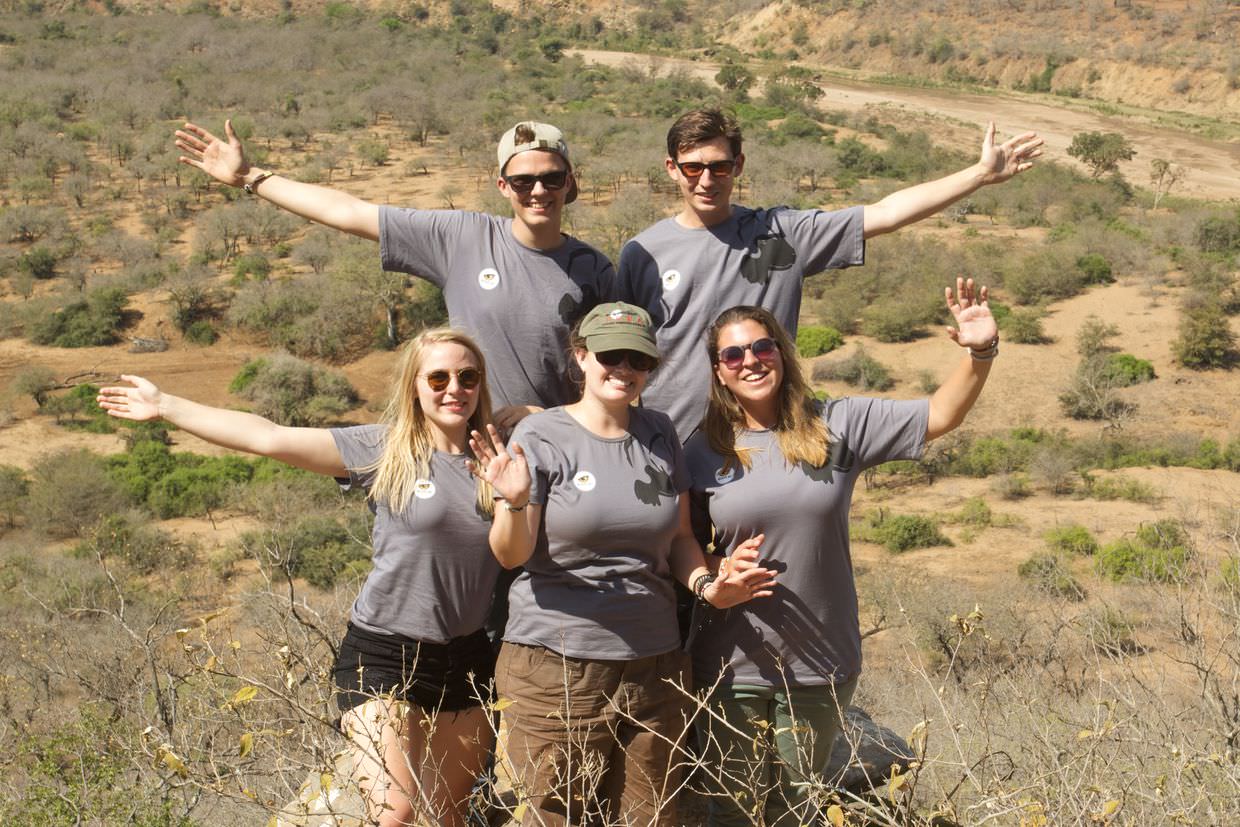
Each of the reserves are in the East of South Africa, in the KwaZulu-Natal region, to the north it borders Mozambique, in the South it borders Swaziland and Lesotho. Part of it used to be the Zulu empire. Zulu is a spoken language here, and many traditional beliefs, practices and superstitions are maintained.
Entering iMfolozi
On Monday, from Richard’s Bay airport where many volunteers had just arrived, and from Fish Eagle Inn – a small hotel with lots of dogs that I’d stopped overnight at, the 5 of us, plus WildlifeAct rep’ Tarryn, drove North in an Igula Tours van. We passed the paper and timber farms, up to iMfolozi.
We met Marumo and the clean white WildlifeAct truck at Phumula Lodge, but before heading to camp we needed to buy our week’s food. At Pick n’ Pay we filled a trolley with potatoes, apples, rice, oranges, bananas, venison, cereal and so on, oh and some last minute beer, beer that turned out to be non-alcoholic. Buying enough food for 6, for a week, and not knowing what each other likes, was our first challenge.
The drive from Phumula Lodge to the camp was a further 1h30, from the corridor road we turned off and entered through Nyalazi gate. It was 6pm, the sunset was a dazzling red, and on the horizon Jupiter and Venus could be seen above the distant hills. It wasn’t long before we got our first wildlife sightings. By the gate we saw our first white rhino, with calf, then another, and another, then elephants. Marumo drove quickly, from the tarmac roads to the dirt ones, and onwards, the wind blew through us, and the evening turned chilly, she slowed for impala and rabbits in the road; a hyena crossed in front of us. We arrived, I hopped out and opened the gate. Home for the next two weeks.
Wildlife Act volunteer camp

The camp is basic but it had everything we needed, well, most of the time.
There’s a room for guys, a room for gals, a spare room and the monitor’s room. Between them is our kitchen, with a gas stove, two sinks, some shelves, and a couple of fridges and freezers. Outside there are two showers; lockable rooms surrounded in corrugated iron each with a hose pipe tied to the roof – it works. There’s two toilets, but only one works. There’s some outdoor decking, it’s shaded and it’s where we sit on green plastic garden furniture to eat our dinners.
Power comes from a generator between certain hours, outside those we can use solar, or a battery charged from solar. Some appliances don’t work on solar, like kettles and toasters. Sometimes the generator doesn’t kick-on, and most of the time we leave camp before it’s due to. Often the solar battery is drained and there’s no power, which means getting dressed in the dark and using torches to check for snakes and scorpions.
The region is experiencing a drought, there’s not much, if any, water. When we arrived the water stopped. Rather than clear liquid flowing from the taps, we had a muddy thick substance that looked like hot chocolate, it clogged up the hot water, the toilets and the showers, each needed fixing. But we coped fine; we filled containers from jojo bins that had collected rainwater, we showered from buckets, we flushed occasionally. Real Africa, real conservation; as they say.
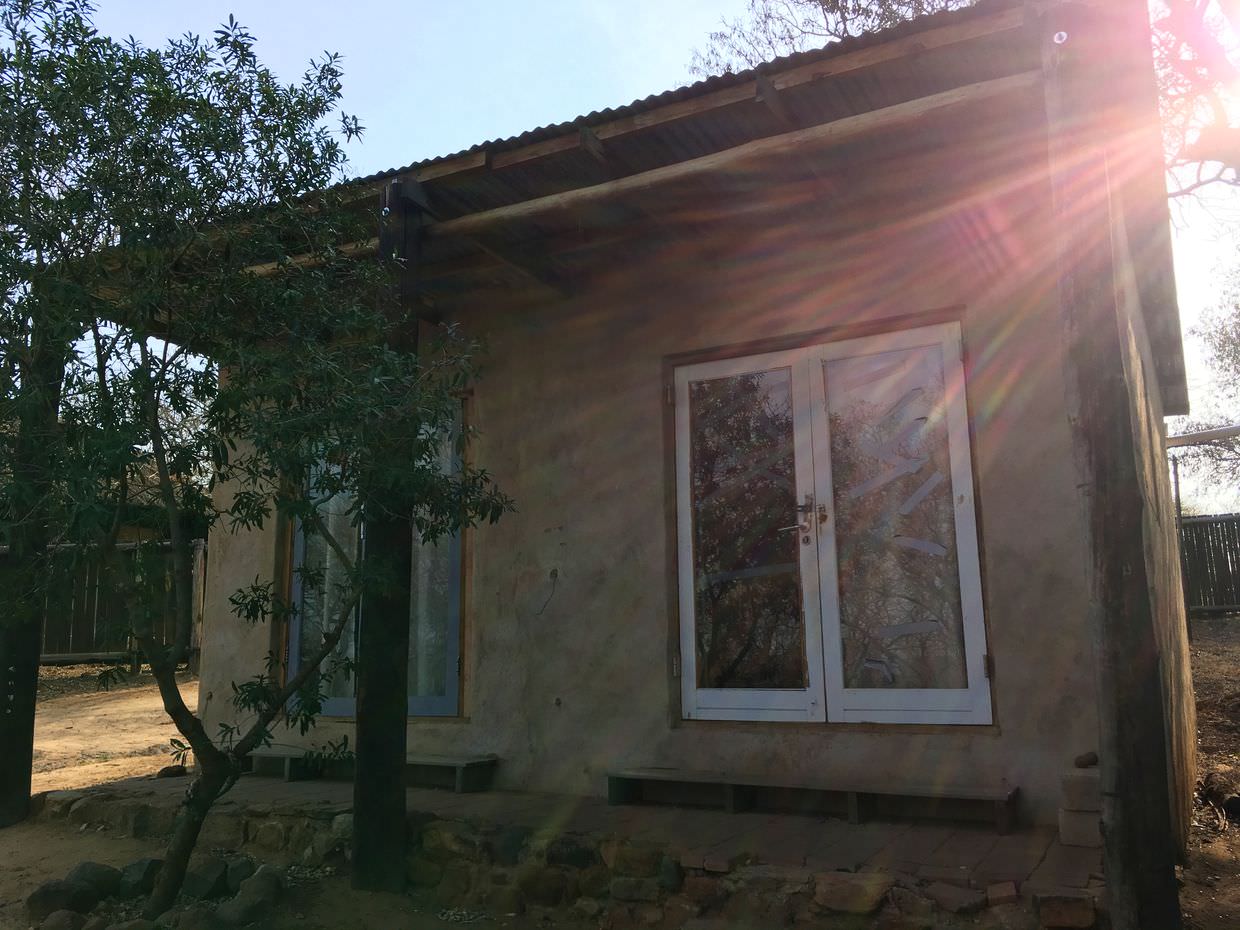
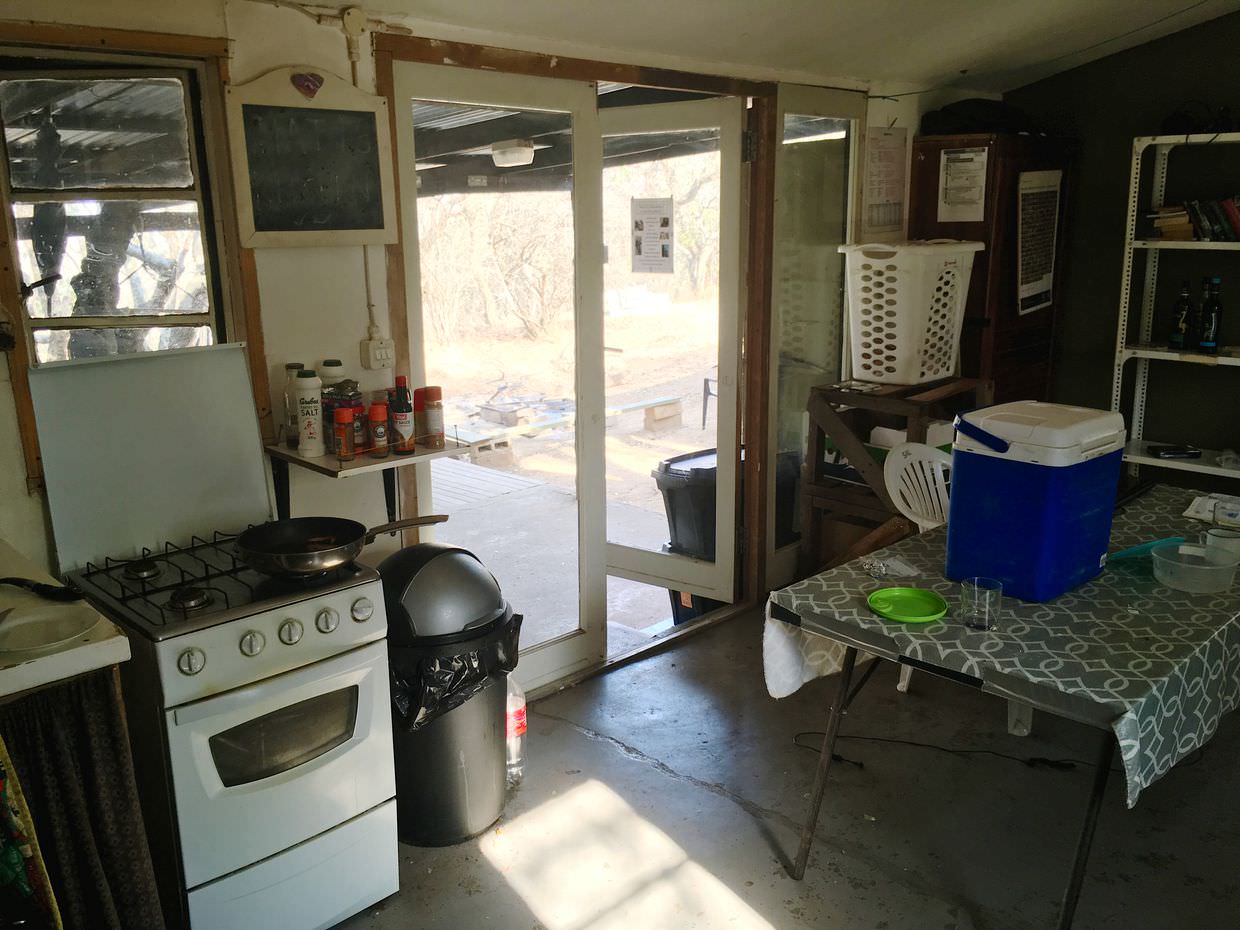
Day 1 – Telemetry and lions
It’s the beginning of spring, which brings with it cold early mornings and scorching hot afternoons. Our stonewalled rooms have no ceiling fans or air conditioning. After my first sweaty night beneath a mosquito net, and after seeing the morning light poke through the glass doors, I got up at 7am and we began our day of training. 7am would turn out to be a lie-in.
The views from camp are astounding. Beyond the wire fence and trees lies a lookout point. From a precarious rock we can see out across the dry Black Umfolozi riverbed, the view stretches from the river, past the trees and out to the distant hills beyond. “You can come down here during the day, but never at night”, Kelsey warns us. Dangerous creatures have been known to come up here. The rock resembles one from a movie, all we needed was a baboon to hold up a baby lion and some music playing “Circle of life”.
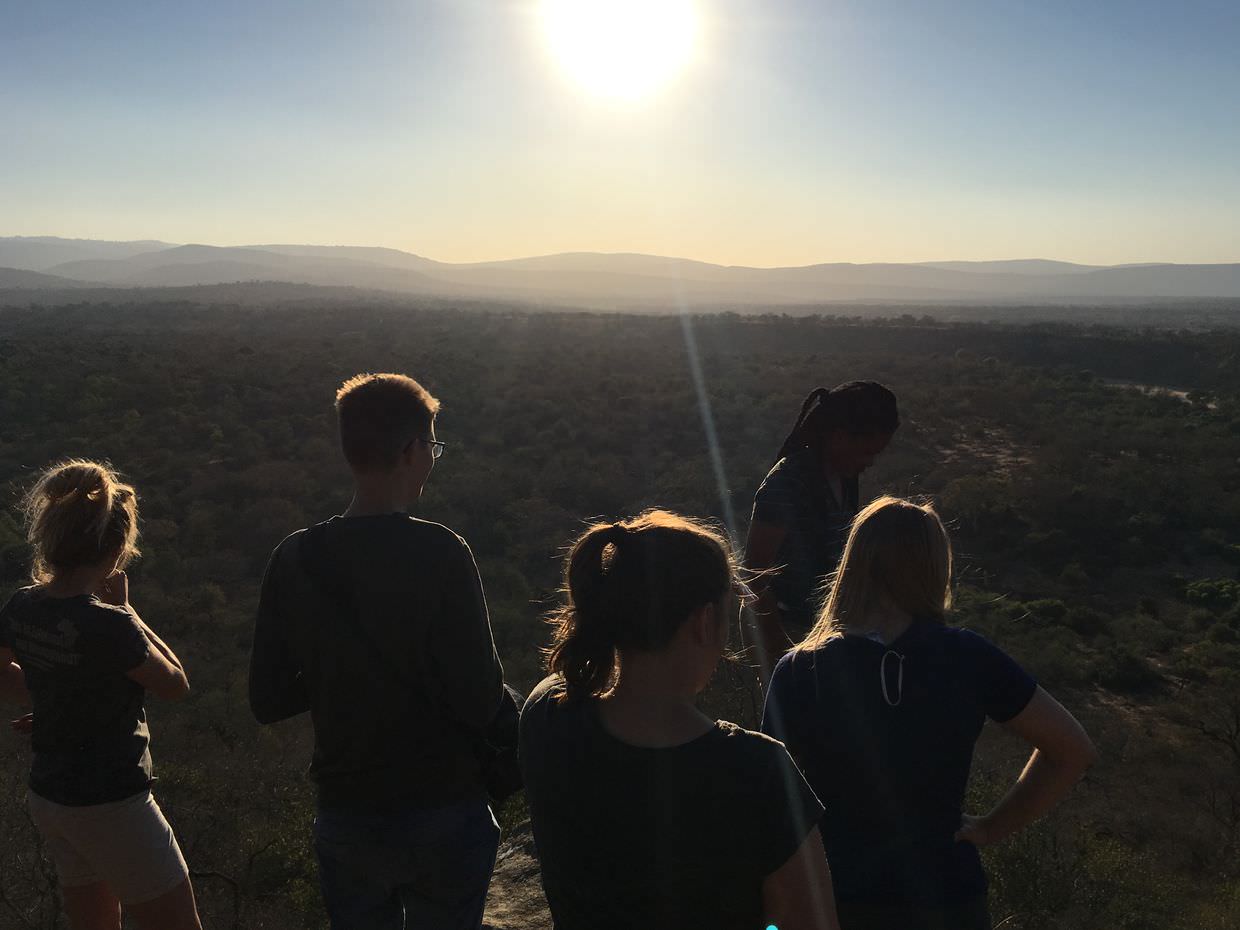
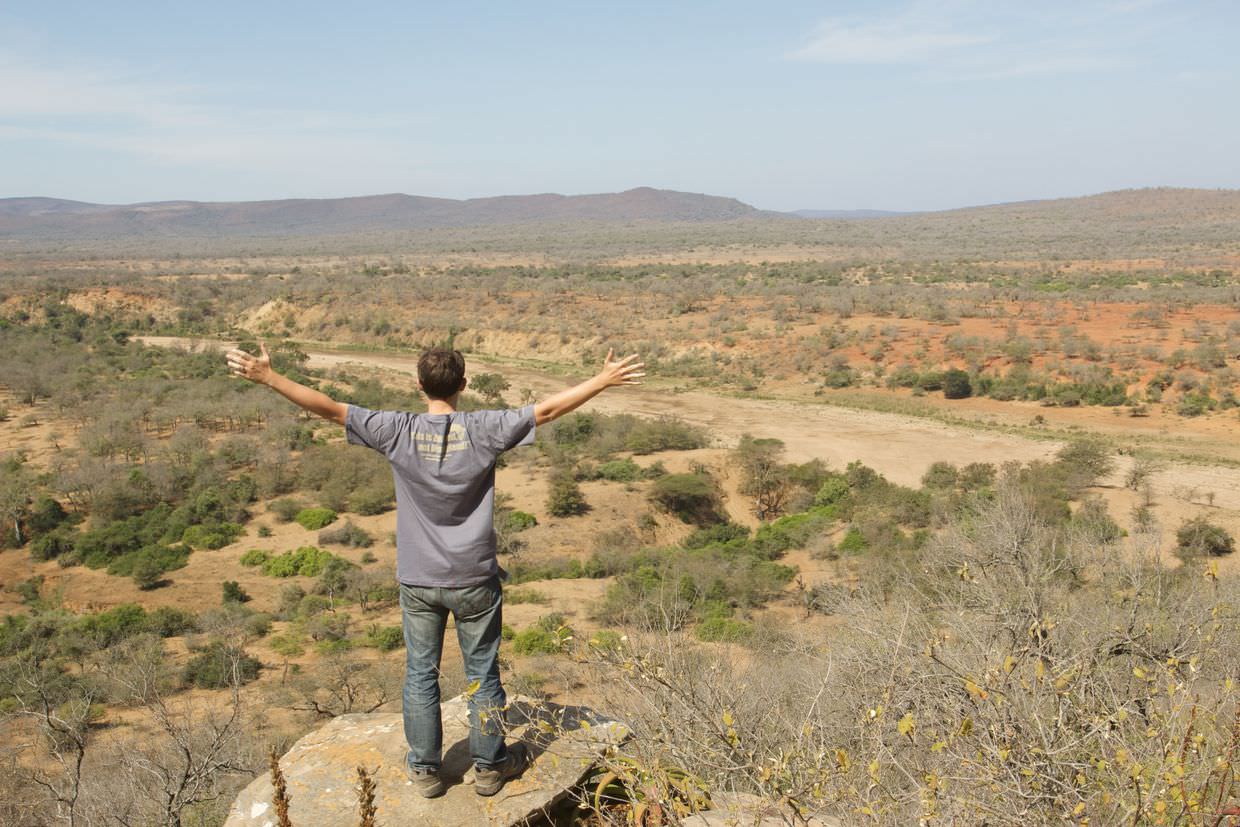
We were shown a WildlifeAct video introduction, we had a project intro by monitor Kelsey, and were told about the emergency procedures. There’s a volunteer phone which can be used to call emergency 24hour support – we can give them GPS co-ordinates and a chopper will arrive as fast as it can, just in case our monitor, Kelsey, is unavailable, say she was killed by a lion, or trampled by a rhino.
We had some other sound advice; if you find yourself face to face with a rhino, climb a tree; if it’s a lion don’t run, you need to stand your ground and stare it down; if it’s a hyena you better not be sleeping, it’ll think you’re dead and begin feeding; steer well clear of elephants and buffalo. Always shut the kitchen doors. Some volunteers left it open, a hyena got in and it trashed the place, including chewing off the fridge doors.
Telemetry
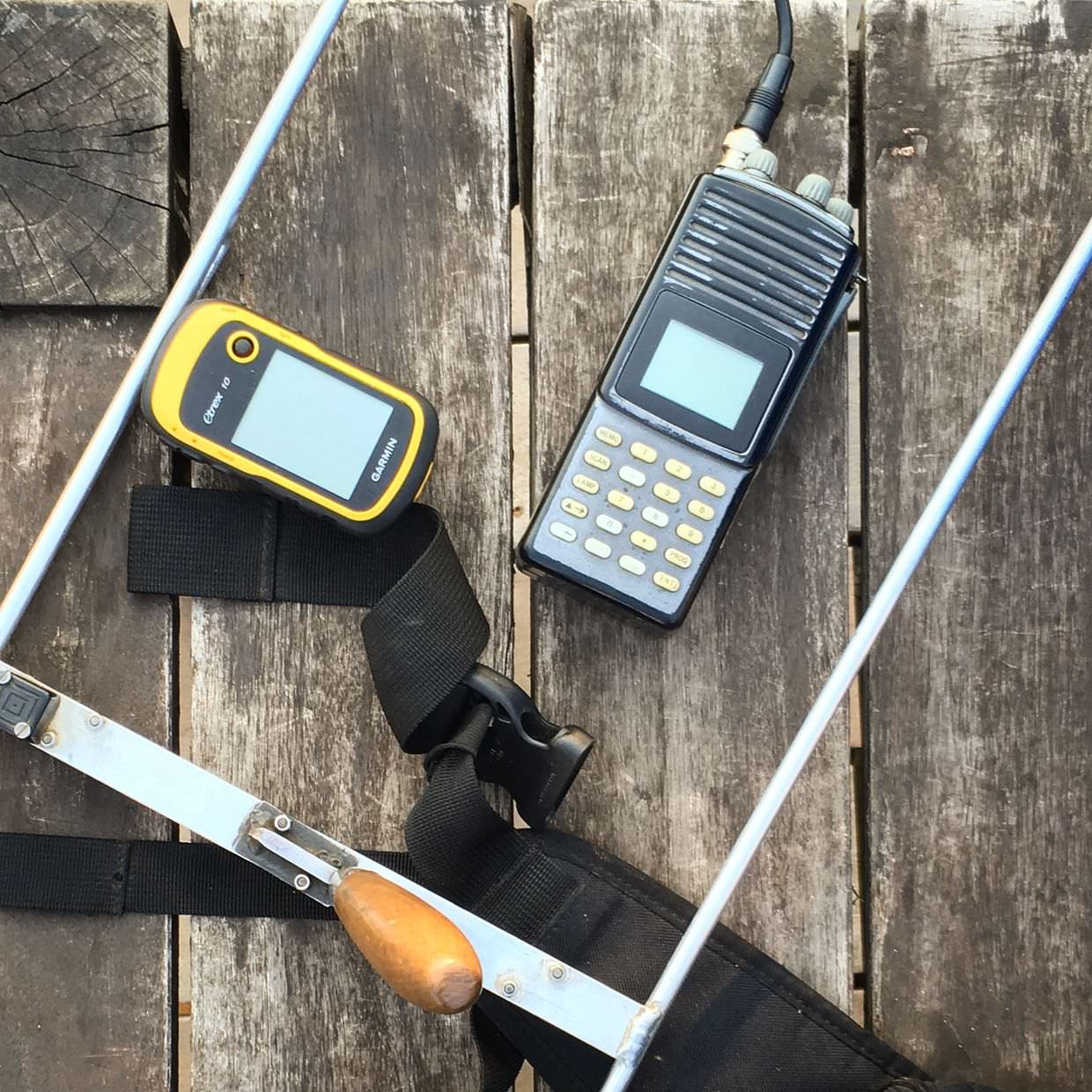
Maruma took us out to teach us how to use the radio telemetry. For each session one of us would be in charge of the radio and aerial, which we use to search for collar signals and to pinpoint the locations of animals. Cheetah, painted dogs, lions and elephants are collared at iMfolozi.
On the radio we turn up the gain to full, turn up the volume and select a named channel to scan for; such as CM19 – a male cheetah; HIP636 – a pride of lions; Fire – a painted dog. With the radio configured we stand on the truck’s seats, hold the antenna up high and begin rotating.
Holding the antenna vertically does a long range scan, covering about 5km in each direction. We turn it around 360 and hope to hear a beeping signal. If we do, and it’s strong enough, we can switch to short range and begin checking the radio for bars of strength. A slow beep tells us the animal is resting, the faster the beep the more active they are – it’s incredibly useful to know if something is on the move.
Pinpointing the exact location is tricky; when a rough direction is known we flick the aerial between different clock points; 12pm, 6pm, 3pm, 9pm, comparing beeps and bars to work out which is loudest and clearest.
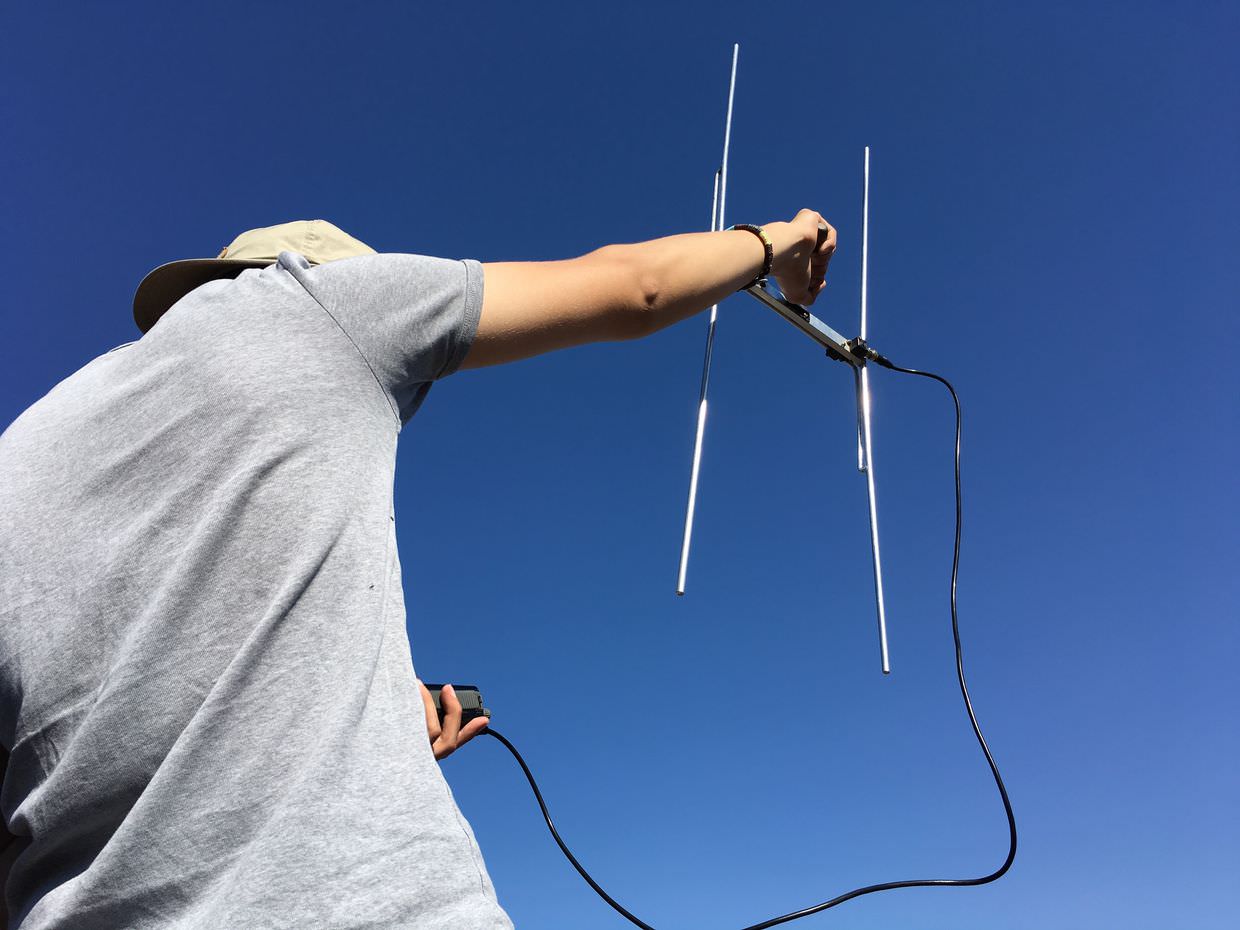
There’s some gotchas with all this. Sometimes we pickup back-signal, a strong signal in the opposite direction; sometimes the animal is a long way away but on the top of a hill, so the signal is strong, at other times we might lose the signal because the animal is close but in a deep valley. We use Kelsey’s expertise to know which is which, and she drives based on our best guesses, then we try again.
Recording notable species
When we see cheetah, black rhino, lions, painted dogs or elephants, we note our sightings on data sheets. We record their GPS location, a description of the location, what they were doing, and any other notes; like specific animal IDs, pack names, the type of sighting (seen, signal, triangulation, info from tourist, etc), and the composition of the group (2 adult females, 1 juvenile male, etc). These paper sheets all get transcribed into an excel spreadsheet on a power-hungry Windows laptop.
Finding our first lions
With the training under our belt (we located an unused collar at camp), we set off to find some real animals. We honed in on a signal from a pride of lions and Maruma drove in their direction. From the top of the hill we could see a gathering of vehicles below, the telemetry pointed there too; this would be an easy first find.
Sure enough, beneath the shade of an umbrella acacia tree, was a pride of lions. Two males and four females, quietly sleeping in the morning sun. But this visit was not without a little drama – two tour groups had arrived with us, and another car, which had been watching them with their air-con on and the engine off had drained their battery. In-front of the lions the tour guides were attempting to jumpstart the 4x4, without much success. The noise alarmed the lions and they soon left. We did too, escaping the burning sun for the shade at camp.
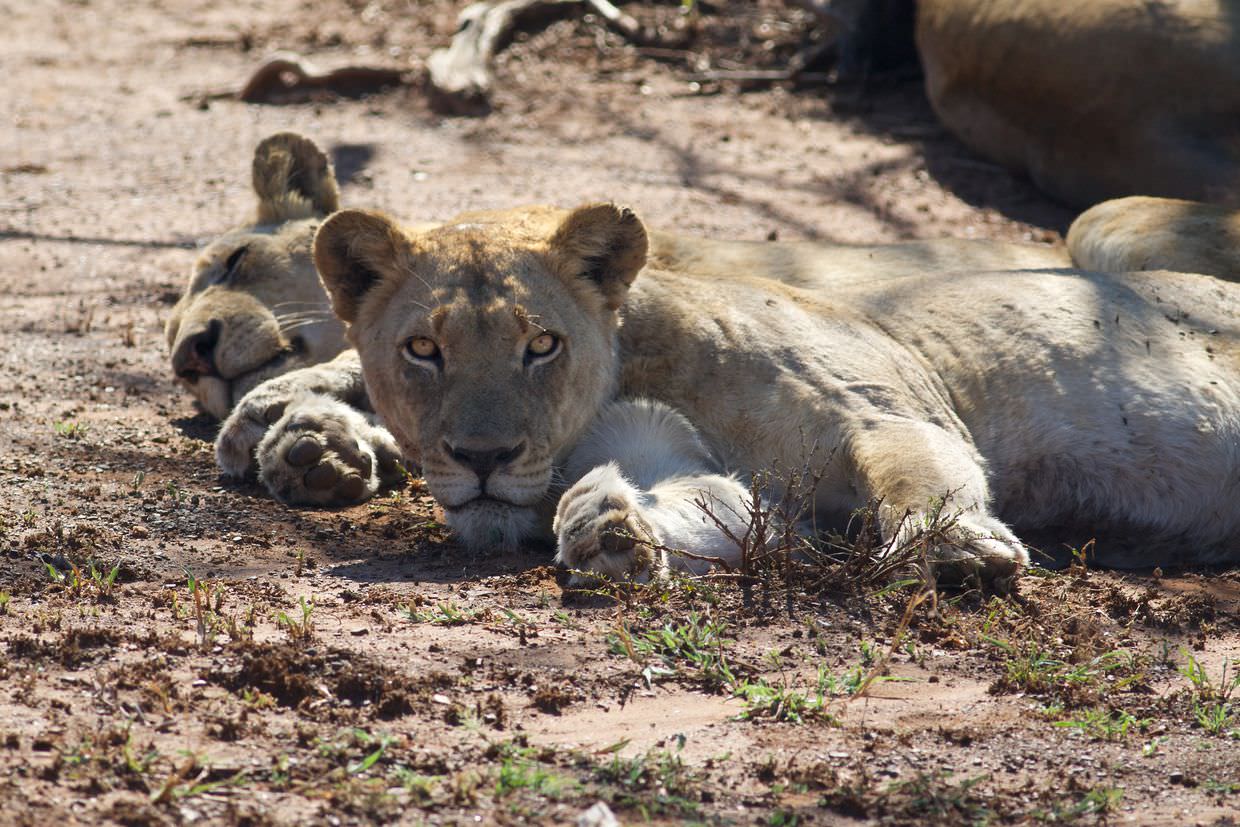
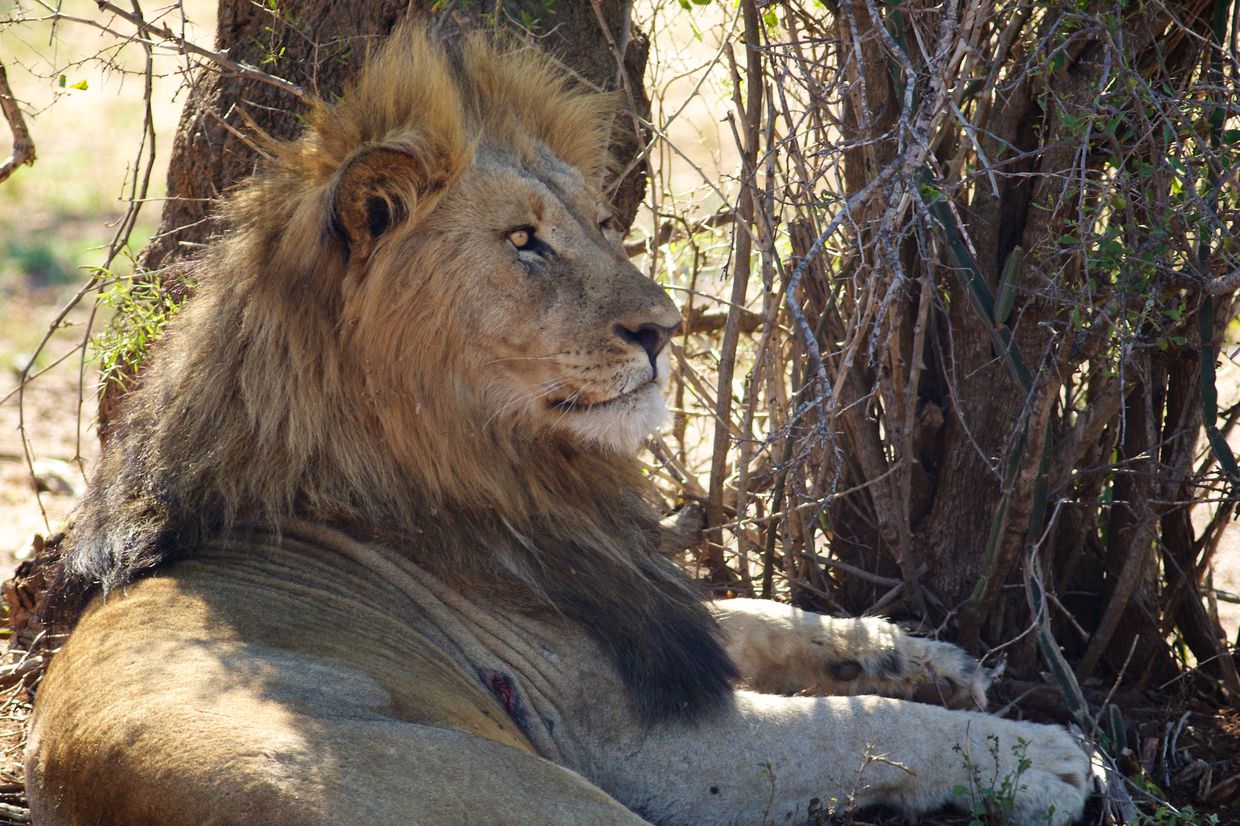
Waiting for Bheji’s pack
A pack of wild dogs had been denning near the roadside, and in the past few days their pack and 13 pups had been seen in the road, playing and cavorting. With a signal from the hill besides camp, we headed there hoping to see them. Each morning and evening a pack is likely to leave their den and go on a hunt; based on the signal, Kelsey knows which road to park on to see the animals emerge.
At iMfolozi you can’t go off-road, so when you’ve pinpointed the signal and are as close as you can be, it’s a waiting and hoping game – hopefully they’ll cross besides us. We were close, we could hear the dogs and pups playing, their squeals and squabbles audible from the truck, but we couldn’t see anything through the thicket. We waited for hours, until the sun went down. Perhaps tomorrow.

Vocalising lion
On the way back we stopped to scan for cheetah CM19, it had been spotted nearby. When the engine cut-off, and before the noisy buzz of the radio was turned on, we all heard it; a male lion vocalising nearby. Our attention shifted; where was this lion?
With a red lamp Kelsey scanned the tree line, looking for two reflective eyes in the dark. We drove up, and reversed down, back and forth trying to find it. One hand on the wheel, another on the torch, all eyes looking right. The vocals kicked off again, a beautiful nighttime call from this powerful beast. I made a recording, but we never saw him.